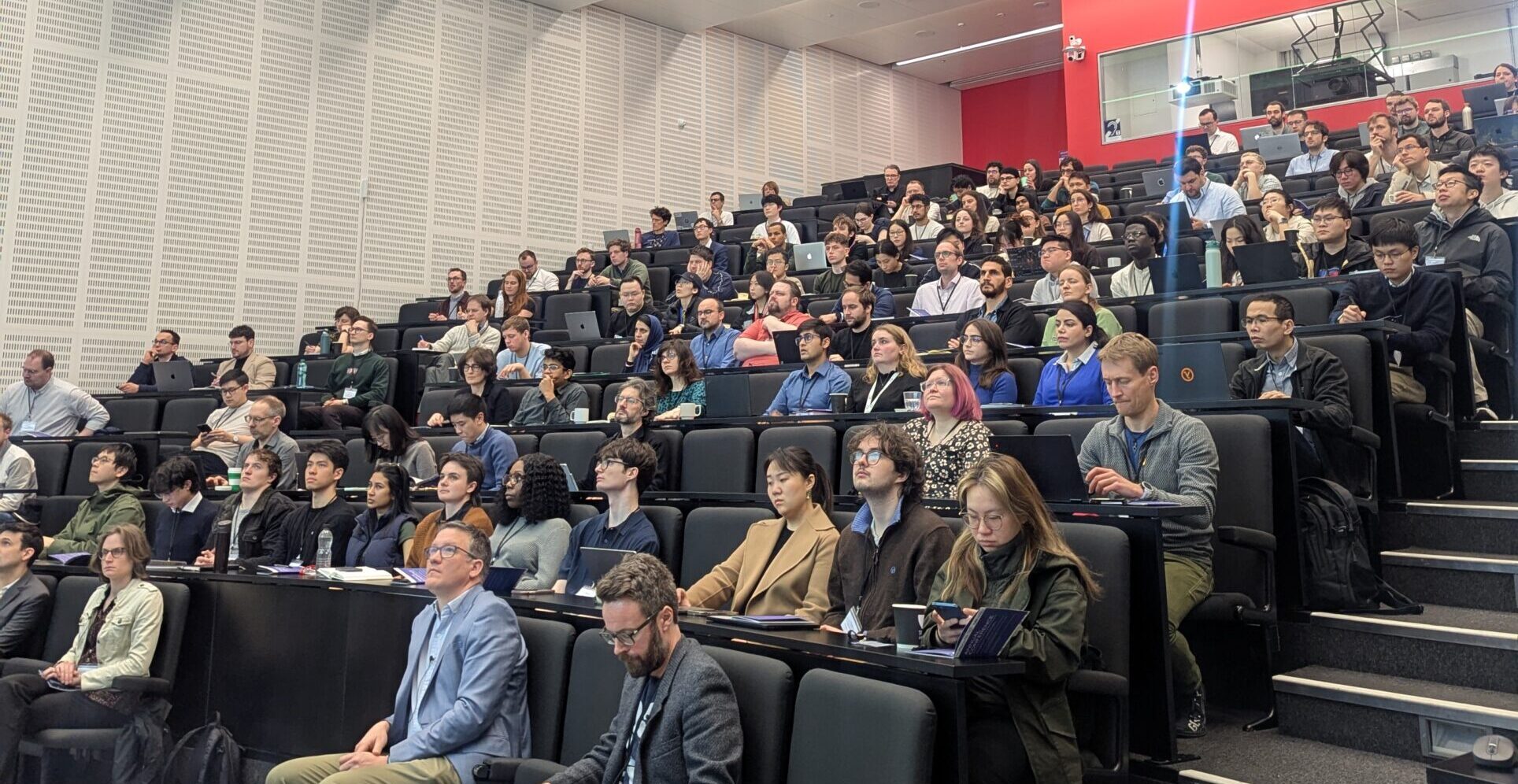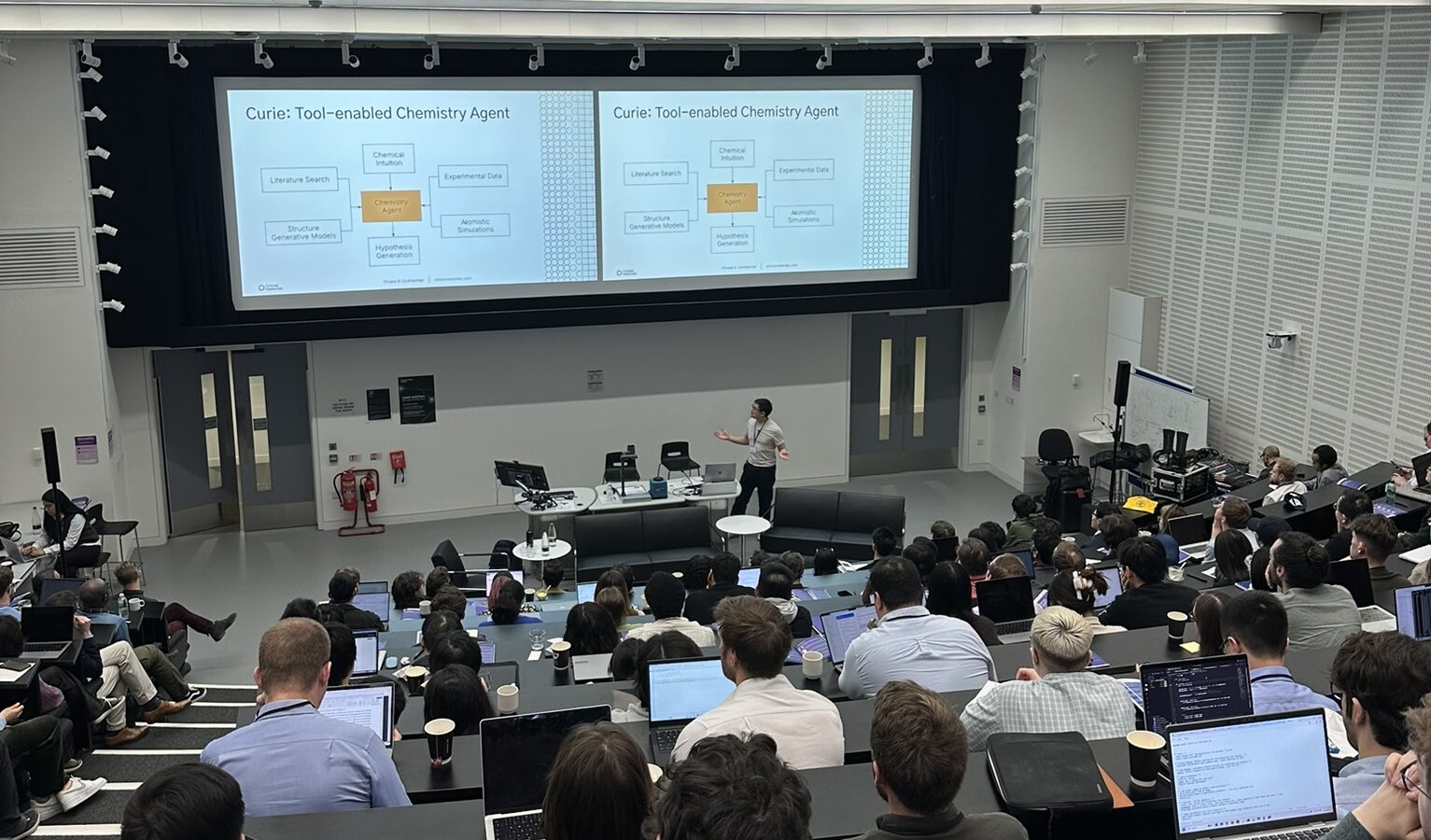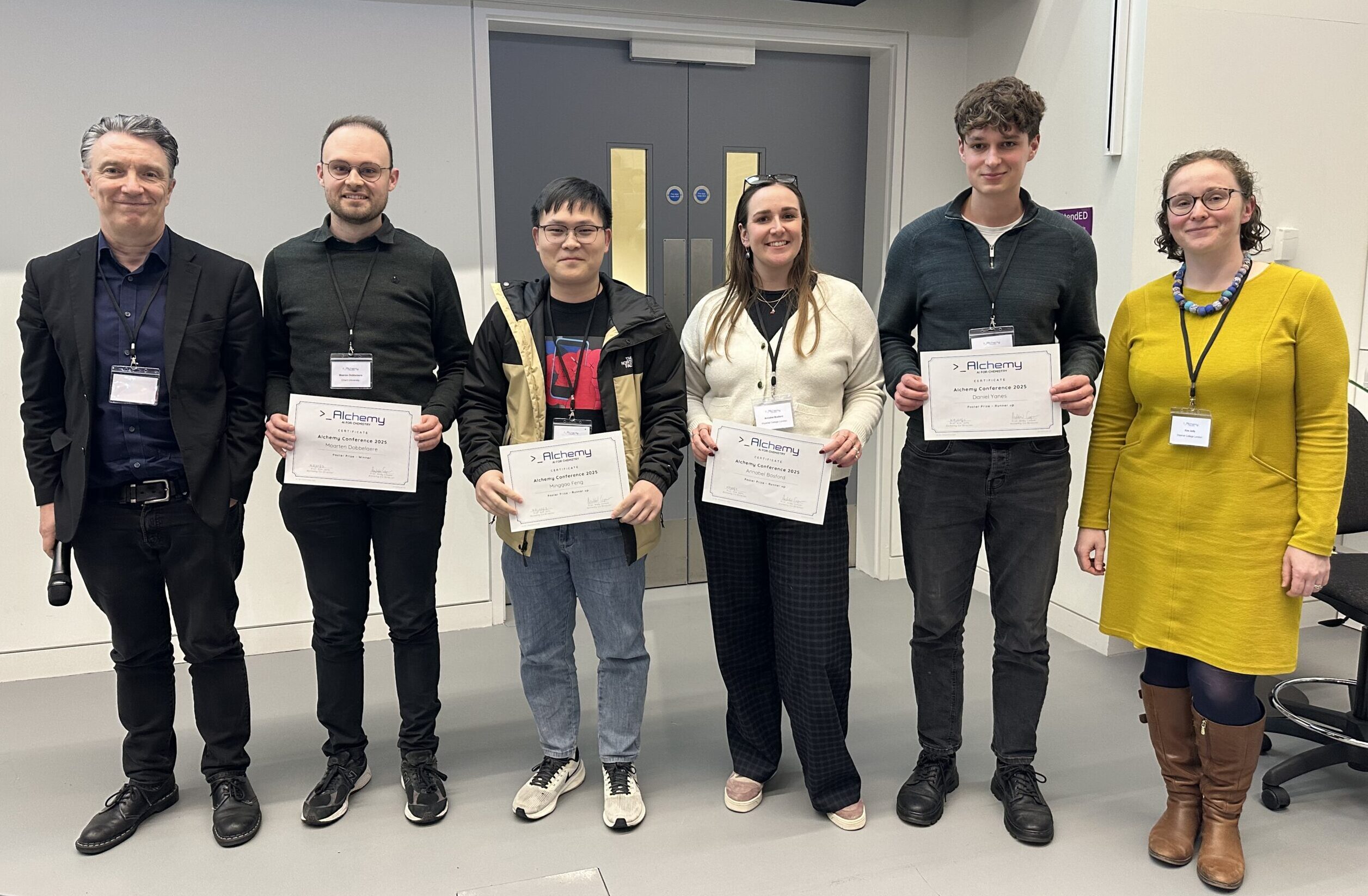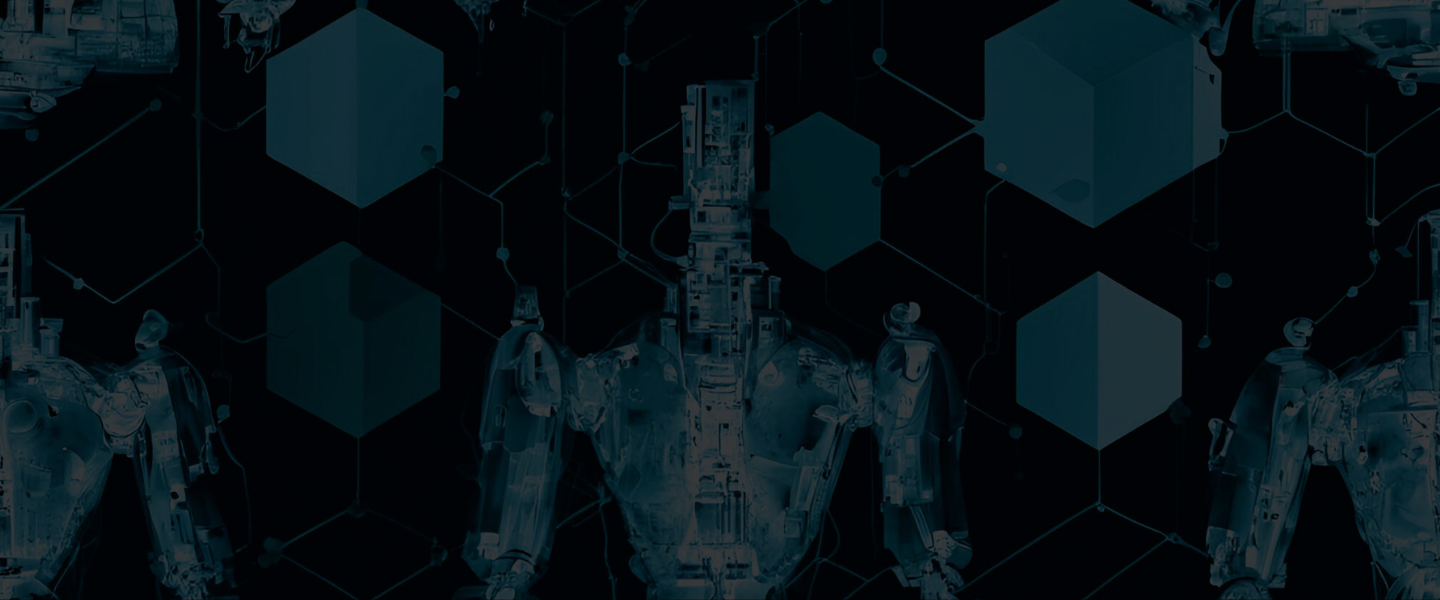Last month, we hosted the first AIchemy Annual Conference, bringing together experts across different scientific disciplines to explore and discuss the challenges and opportunities for AI in Chemistry.
From optimisation breakthroughs to generative AI, robotics, and responsible AI, the discussions made one thing clear: AI is revolutionising chemistry at an unprecedented pace.
We kicked off the morning with a session on Optimisation in Chemistry, where efficiency took centre stage.
Let’s dive into the key takeaways that are shaping the future of our field.

- Richard Bourne (University of Leeds) highlighted self-optimising flow reactors, integrating Bayesian Optimisation and Machine Learning to automate chemical discovery.
- Ruth Misener (Imperial College London) introduced BoFire, a Bayesian optimisation framework designed to tackle real-world lab constraints, urging open-source collaboration.
- Jan Gerit Brandenburg (Merck Group) shared Merck’s BayBE, a Bayesian Optimisation platform solving industrial-scale black-box problems, proving AI’s scalability.
Next, we explored the frontier of Generative AI and Large Language Models.
- Sam Cooper (Imperial College London) highlighted the immense potential of generative AI in accelerating material design, leveraging tools like GANs and LLMs for data fusion and process-structure-performance optimisation. His spinout, Polaron, aims to offer a rapid and cost-effective solution to manufacturers in fields like battery production.
- Yulan He (King’s College London) delved into the challenges and potential of LLMs for chemistry, particularly in pharmacovigilance and drug-drug interaction (DDI) prediction. She stated that LLMs struggle with non-textual chemical data and require advanced multimodal reasoning to integrate molecular structures, spectra, and lab results effectively.
- James Gin-Pollock (Orbital Materials) showcased how Orbital Materials has leveraged foundation models for equilibrium structures, conditional generation for molecule design, and generative pre-training for computational efficiency. However, he emphasised that bridging AI with real-world experimentation remains the biggest challenge, particularly at larger length scales where data is scarce.

After a much-needed lunch break, we explored the exciting world of human-robot collaboration – Human-in-the-Loop & Robotics session.
- Gabriella Pizzuto (University of Liverpool) addressed the challenge of making lab robots more dexterous and adaptable, paving the way for true robotic chemists.
- Luis Figueredo (University of Nottingham) emphasised the importance of safe and intuitive human-robot interactions, where robots respond to natural language and physical contact.
- Kenji Takeda & Andrew Fowler (Microsoft Research) introduced embodied AI, where AI-driven robotics can sense, perceive, and act in real-world lab settings, hinting at a future of seamless collaboration
We then explored the cutting-edge AI tools driving chemical discovery.
- Rob Palgrave (UCL) explored AI’s role in materials chemistry, from predicting crystal structures to solving complex compositional disorder challenges.
- Kevin Jablonka (Helmholtz Institute) demonstrated how LLMs manage real-world chemical data, automating data extraction from research papers and unifying diverse data types for better predictions.
- Jeyan Thiyagalingam (STFC-RAL) showed AI’s power in bridging simulations and experiments, using physics-informed models to align predictions with reality.
Our final session tackled the crucial topic of responsible AI.
Sophia Yaliraki & Alessandra Russo (Imperial College London) led a thought-provoking discussion on the ethical responsibilities of AI in chemistry.
“AI is only as good as the decisions we make about its use.”
Key takeaways included:
- Interpretability matters: AI must be understandable and fair to be trusted.
- AI is shifting from pattern recognition to reasoning, with neuro-symbolic AI bridging deep learning and symbolic logic.
- Bias, accountability, and safety are critical—unreliable AI can amplify errors.
- Hybrid AI systems offer a balance of accuracy and interpretability, particularly for chemistry applications.
Celebrating Our Poster Winners of the day!
A huge round of applause to our incredible poster winners!
🏆 Winner: Maarten Dobbelaere (Ghent University)
🎉 Runners-up: Annabel Basford (Imperial), Daniel Yanes (University of Nottingham), Minggao Feng (University of Liverpool)
Thank you to all who presented their posters—your research is pushing the boundaries of AI in chemistry!

Final Thoughts: The AIchemy Revolution Continues
The AIchemy Annual Conference was a testament to the transformative power of AI in chemistry. As we look to 2025 and beyond, we anticipate AI becoming even more integrated and essential to chemical discovery. The AIchemy community is at the forefront of this revolution, and we’re excited to see what the future holds.
Stay tuned for more insights, breakthroughs, and updates from AIchemy!

